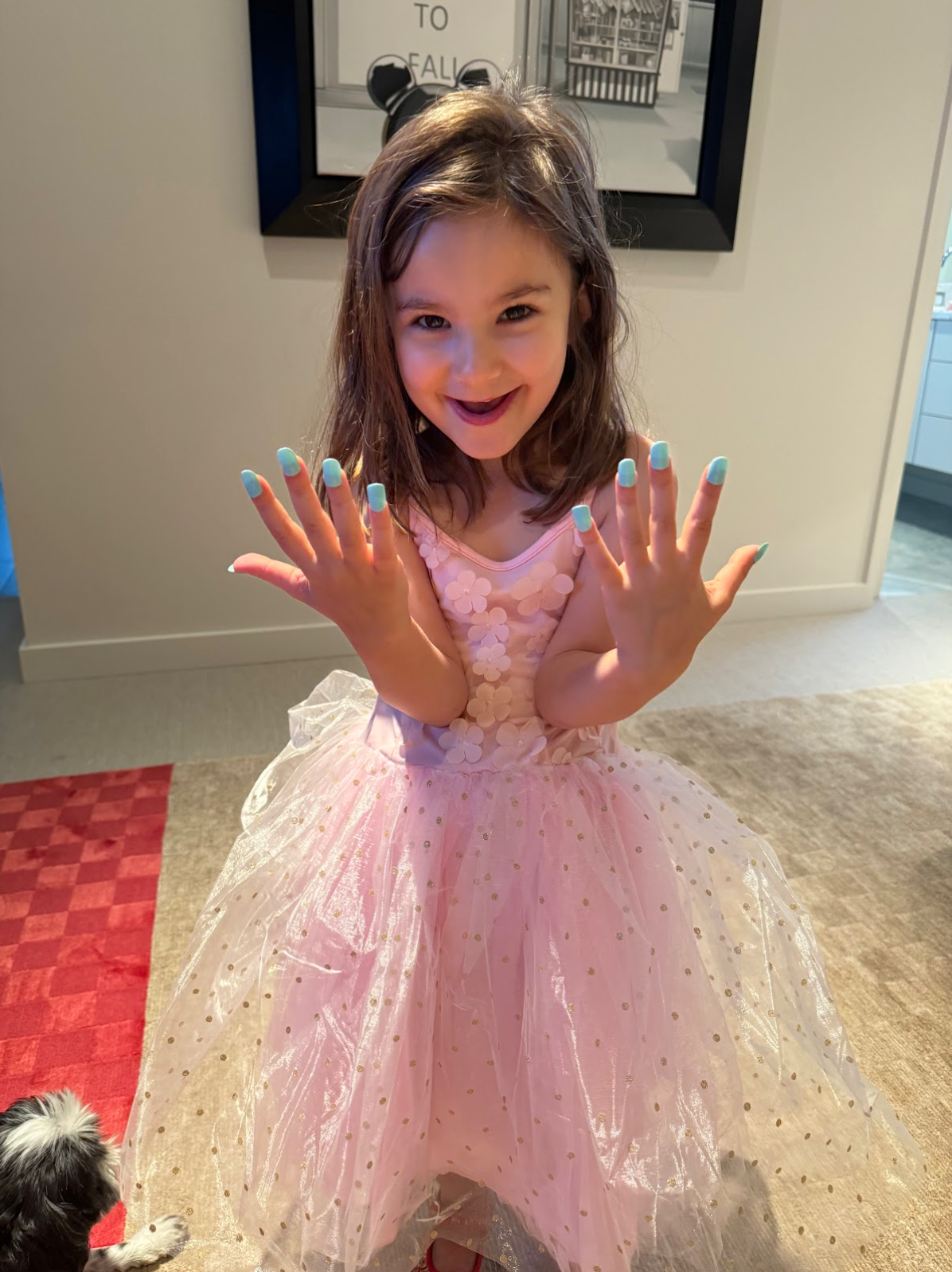


















“No mortal can keep a secret. If his lips are silent, he chatters with his fingertips.”
Sigmund Freud’s words from Introductory Lectures on Psychoanalysis (1917) suggest that nothing remains truly hidden. Our bodies always find a way to speak. Whether through a smirk, a rouge’d lip or a raised eyebrow, our inner world inevitably reveals itself. Our faces–not just our words–are the stage for our inner selves to communicate with the world.
If it were up to my four-year-old daughter Sofia, she’d wear flamboyant makeup, fuschia hair clip-ons, rhinestone-encrusted tiaras, and press-on nails all day, every day. She quickly tires of one princess dress, only to crave another with an intensity that’s impossible to quiet. Every tenacious morning, she tries to sneak a painted face and bejeweled décolleté past my “Not for school,” only to respond with the inevitable: ”But WHYYYYYYYYYYY????”
Why indeed! When pressed for a reason, I realize my logic falls short. Perhaps it’s because I—as many adults—have tucked away the deep, meaningful childhood joie of dressing up and experimenting. Something so innocent and joyful, and we’ve smothered it, relegating it to a forgotten corner of our psyche where it remains, forlorn and repressed.
I am reminded of my glorious youthful days at Plastic, the legendary Milan nightclub famed for its avant-garde atmosphere and eclectic crowd. It once drew icons like Madonna, Elton John, and even Andy Warhol, who named it ”the best European club.” My fondest of memories include wearing black patent thigh-high boots and dancing with my elegant friend—who happened to be in drag.
Author and gender theorist Judith Butler argues that gender is not an innate truth but an ongoing performance. She writes, “Drag is subversive to the extent that it reflects on the imitative structure by which hegemonic gender is itself produced and disputes heterosexuality’s claim on naturalness and originality.” According to Ms. Butler, gender identity is not a fixed essence but a continuous process—shaped by repeated actions, societal taboos, and the expectations that dictate what is deemed masculine or feminine.
Sofia, too, reminds me of that power—the instinct to reinvent, to step outside of what is dictated and into what may feel right and joyous. She makes me wonder what parts of ourselves are natural inclinations and which parts are just echoes of cultural conditioning.
I wonder, when we change our hair or look, is it mere decoration and cultural tendency, or is it a reflection of something deeper–our evolving moods, desires, and sense of self? We might try out a boldly patterned garment that’s atypical of our usual style; we may revel in a new pair of rose-tinted glasses that no one would have identified as “us” before, or we may even alter our features—some through cosmetic procedures-–to bridge the gap between our internal world and external form. But beyond these actions, is there something more fundamental at play? Where is this curiosity driving us to ask, “Is this ME?” coming from?
Humans are, by nature, creatures of self-adornment. We’re creatures worth admiring, damn it! And I proclaim our existentially meaningful right that we reap great satisfaction in that endeavor!
I find it interesting that this impulse was not always unique to women or to those in drag. History clearly defends it has always been just as present in men of all sexual tendencies. We mustn’t forget that dating all the way back to 6000 BCE, both Egyptian women and men not only used makeup but pioneered its creation, seeing it as a symbol of godliness. The 17th and 18th centuries saw European aristocratic and royal men (as in King Louis XIV) wearing wigs, makeup, jewelry, and heels as symbols of status and power. They would rouge their lips and powder their faces and voluminous bouffants—something initially exclusive to masculine fashion. Makeup was their ruse to exude health and nobility. Today, however, such flamboyant expressions would be associated exclusively with drag culture.
Across cultures and centuries, the artistry of self-adornment has carried diverse meanings—from the spiritual power of the Geisha’s white-painted face to the vibrant exuberant adornments of indigenous ceremonies. We may clothe and re-clothe our bodies, but our head remains our socially–and relatively–naked self. It’s where our individuality finds its true home. It’s how we most/best present ourselves and intermingle with the world. But fascinatingly, it’s the part of us that makes the rest of us light up, whether we’re dressed in rags, athleisure, a ballroom gown, or drag.
And to that end, I proclaim: LET’S SAVOR AND BE IN FAVOR OF THE FLAVOR OF THIS WAIVER. Let’s experiment and play, embracing all that is mutable and daring with our hair, our makeup, and our desire to step into the unknown.
Dressing ourselves and our faces is an art—an art of self-creation. It elevates us beyond raw nature, unleashing our imagination, creativity, and playfulness. While we may think we style our heads and faces to appeal to others, I believe we do so to satisfy ourselves—to feel whole, refined, and aligned with our inner vision and current mood. Throughout history, women must have recognized and relished this deep satisfaction, so much so that no effort, time, or judgment could diminish the joie it brought them.
This wasn’t fully acknowledged until World War II. Suddenly, as women stepped into roles traditionally reserved for men, they made it quite clear that lipstick was more than just a frivolous indulgence–a pleasure saved for social gatherings. It became a source of strength and morale, a shield, a weapon of resilience. Something not merely reserved for the male gaze or festive occasions, but something powerful enough to uplift the spirit during the harsh realities of wartime. Whether in factories, offices, the military, prisons, or even the solitude of their own homes, women proved that beauty was not just about being seen but about seeing themselves anew.
In a world that constantly demands conformity, these acts of self-beautification are our quiet rebellions. They are our way of asserting ourselves. Whether it’s a bold swipe of lipstick, a daring hairstyle, or a carefully crafted look, these choices reflect our curiosity of the endless possibilities within us.
My daughter reminds me daily to celebrate this curiosity and the artistry that comes with it. And to recognize–-in true drag spirit—that self-expression is not about how it looks, but how it makes us feel.
So join me and raise your hair brushes and bold lipstick! Here’s to the art of self-creation. May it forever be our cherished form of expression.
AHHHH BUT, TO THAT END, WAIT!!
A question then comes to mind:
Is embellishing, enhancing, or altering our faces a mirror of our inner selves, or is it also a shield? Could it be a means of presenting to the world what we most want to celebrate—or perhaps, most conceal?